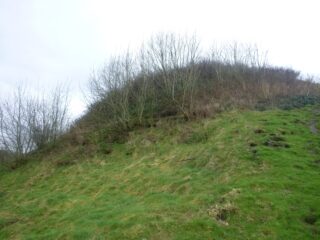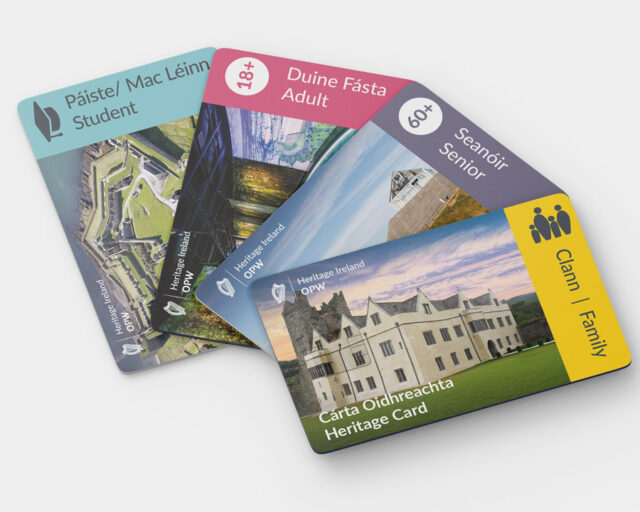Notice
Knockgraffon Motte is a National Monument in state guardianship
WARNING: It should be noted that these sites are unguided and a level of care and caution should be maintained during all stages of your visit. The Office Of Public Works (OPW) will not be held responsible for any damages, injuries, or losses that occur
Knockgraffon Motte and Bailey
Knockgraffon motte and bailey is five km north of Cahir, Co. Tipperary. Motte-and–bailey castles were traditionally a wooden keep erected upon a mound of earth called a motte, surrounded by an enclosed courtyard, surrounded by a protective palisade called a bailey.
Knockgraffon is a Norman motte, dating to 1192 and was built against Dómhnall Mór Ua Briain, King of Thomond and of Munster (who established Kilcooley Abbey). It is believed that Knockgraffon motte was built on an earlier inauguration site for the Kings of Munster. The motte was subsequently granted to William de Braose in 1202 by order of King John to Philip of Worcester. Philip of Worcester was part of Henry II’s household, sent to Ireland to prepare the way for his son, then, Prince John. In 1215, Knockgraffon was re-granted back to Philip of Worcester along with five cantreds in Tipperary for £100. At the dawn of 1300 Joan de Bermingham inherited Knockgraffon via her dowry, she was married to Meiler de Bermingham who died 1302. The widow de Bermingham had to file a lawsuit against her former father in law, Peter de Bermingham 2nd Lord of Athenry, over possession of Knockgraffon, and won.
Knockgraffon motte was built on a natural hill with the bailey at its base to the north-west. Except for the north side, all other sides of the motte are sheer. Remains of a walled structure and portions of walls are round on the top of the motte. An extensive fosse was located at the base of the motte at the south-west. The rectangular bailey is defined by a stone bank. Experts have found the remains of a structure at the base of the motte and other sub-divisions within the bailey.
Protect our Past - Click here to read about the importance of protecting our country’s unique heritage sites
This national monument is protected in accordance with the National Monuments Acts 1930 to 2014
Gallery
Nearby sites to visit
Cahir Castle
A defensive powerhouse of the thirteenth century
Approx. 4.2 km from Knockgraffon Motte and Bailey
The Swiss Cottage
An idyllic fantasy of country life
Approx. 6.1 km from Knockgraffon Motte and Bailey
The Rock of Cashel
The high king of Irish monuments
Approx. 12.3 km from Knockgraffon Motte and Bailey
The Main Guard
A courthouse with centuries of history under its arches
Approx. 17.0 km from Knockgraffon Motte and Bailey
Famine Warhouse 1848
The unlikely site of a bloody skirmish
Approx. 36.1 km from Knockgraffon Motte and Bailey
Ormond Castle
Discover a Tudor gem
Approx. 36.5 km from Knockgraffon Motte and Bailey




